There are great examples throughout Pennsylvania – and the country – of historic buildings being repurposed to support, house, and celebrate local and regional arts communities. Two specifically come to mind in Pennsylvania, the GoggleWorks in Reading, Berks County and the Walk In Art Center in Schuylkill Haven, Schuylkill County. The Ohringer Artist Residences in the former Ohringer Home Furniture store 640 Braddock Avenue in Braddock, Allegheny County can now be added to that list.
Brief History
Abraham Ohringer, an Austrian immigrant, started the Braddock Furniture Store in 1912 and operated others in the business districts of both Greensburg and McKeesport. By the 1930s, the company was renamed Ohringer Home Furniture and successful enough to invest in its own large department store in downtown Braddock. The new store was completed and opened in 1941, a short distance west of Edgar Thomson Works of US Steel.
Designed by Pittsburgh architect Harry H. Lefkowitz, the Ohringer building is an 8-story commercial building that displayed Moderne style characteristics such as smooth and unornamented surfaces, stacked horizontal elements, and curved corner wall. The building also featured brick and terra cotta masonry with large, glazed window and first floor storefront system openings, and large frontal blade sign.
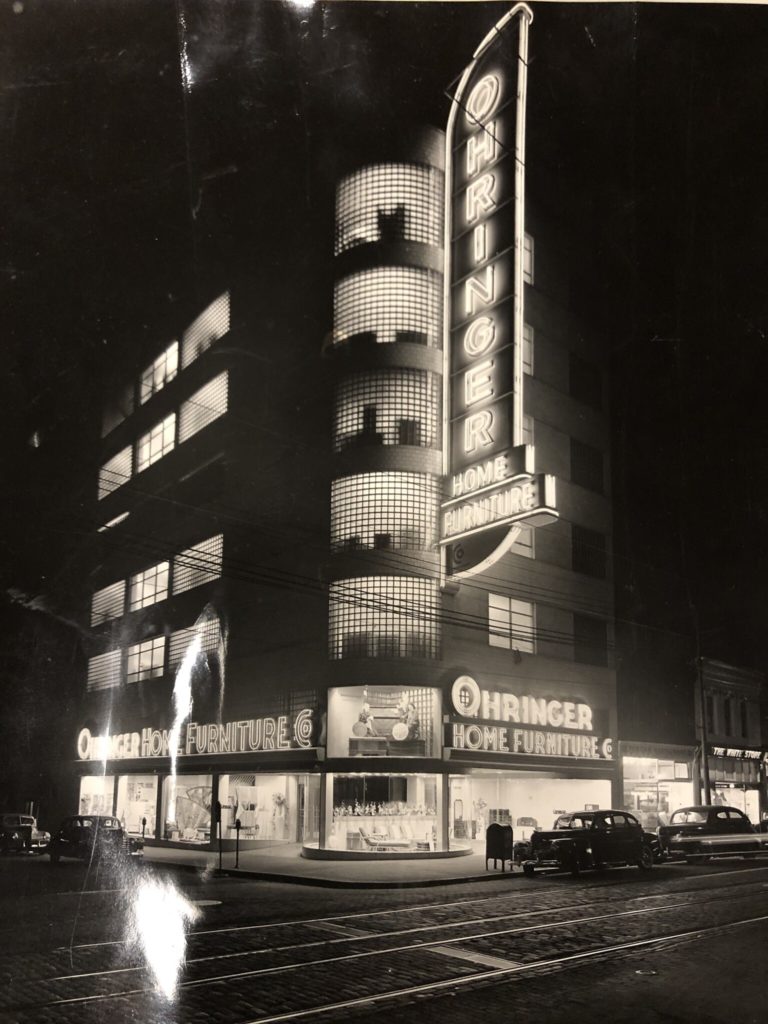
The store’s interior was designed in a way that kept each floor level open in plan that contained a different color and different styles and types of furniture while allowing easy mobilization of purchased products by a large freight elevator. The store was departmentalized so shoppers would know exactly where to go for the room or type of furniture that they wanted to buy. The new unusual ultra-modern design of the exterior matched the beauty and synchronization of the interior of the store.
In time, the business prospered due to increased War World II production and war-time demand despite competition that included at least a half dozen other furniture stores in Braddock. The Ohringer store was the largest and tallest building on Braddock Avenue, a main street that developed a reputation as rowdy 24-hour-a-day thoroughfare, served blue- and white- collar industrial workers and their families by selling furniture and appliances on installment plans with payments mostly due in cash at the store on mill paydays.
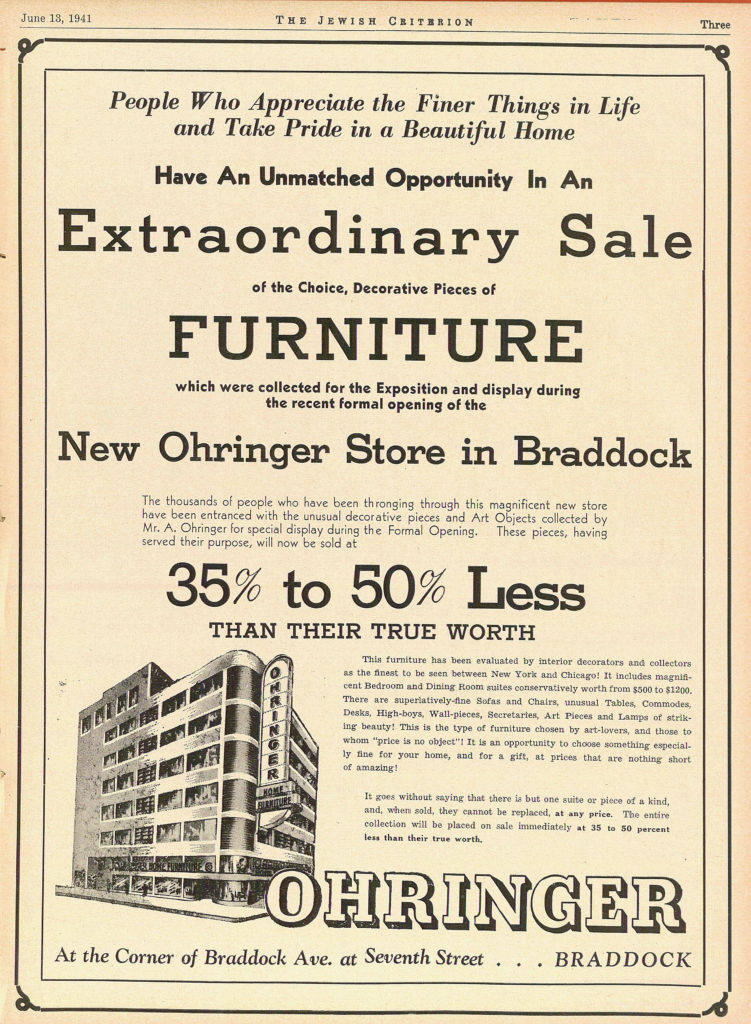
The thriving furniture business brought the Ohringer family great successes and allowed them to prosper in their life and investments. In 1957, the furniture company was sold to a New York business that continued operations under the same Ohringer Home Furniture Company name until bankruptcy was declared and a final sale was transacted on July 24, 1964.
Pre-Rehabilitation
The mighty steel town of Braddock saw a rapid decline in population due to the catastrophic collapse of the U.S. industry that was supported by improvements in steel-making efficiency and reduced job forces. By 2010, Braddock had one-tenth of its 1920 population, which resulted in many commercial buildings on Braddock Avenue being abandoned, collapsed, and demolished.
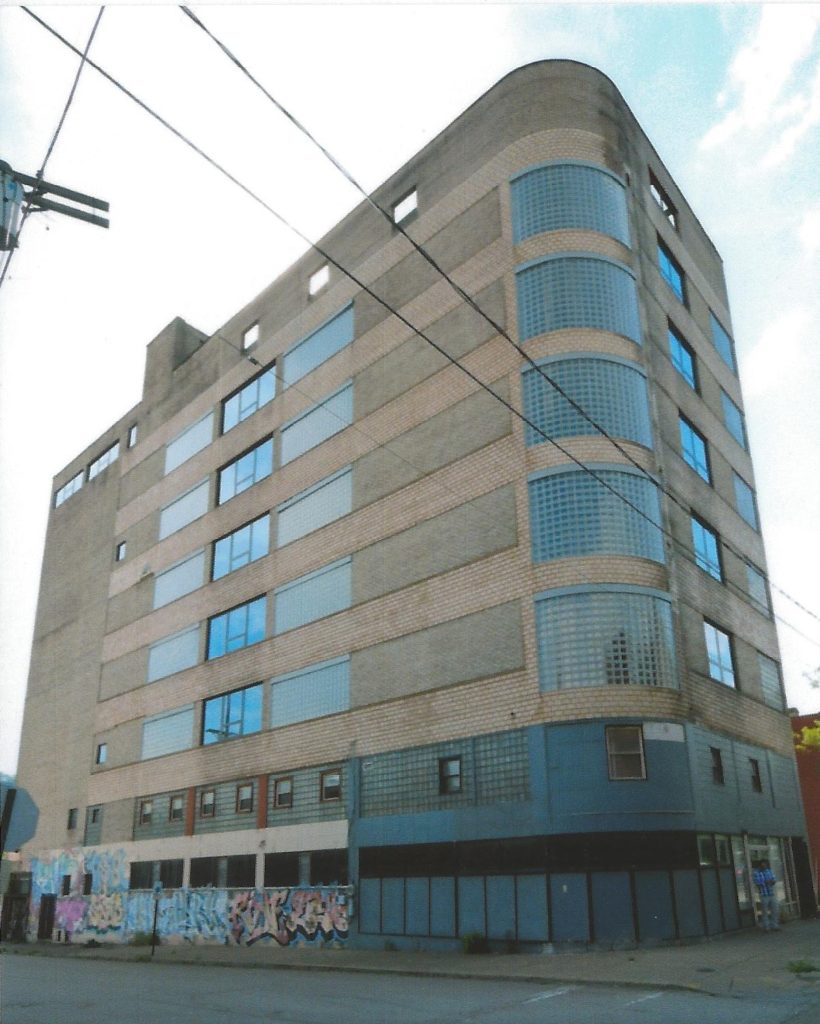
Through this decline the Ohringer building outlasted with its age and quality of construction. Over time the building has been reused and altered in many ways, including the removal of the original roof over the eighth floor that left the building’s steel structure exposed.
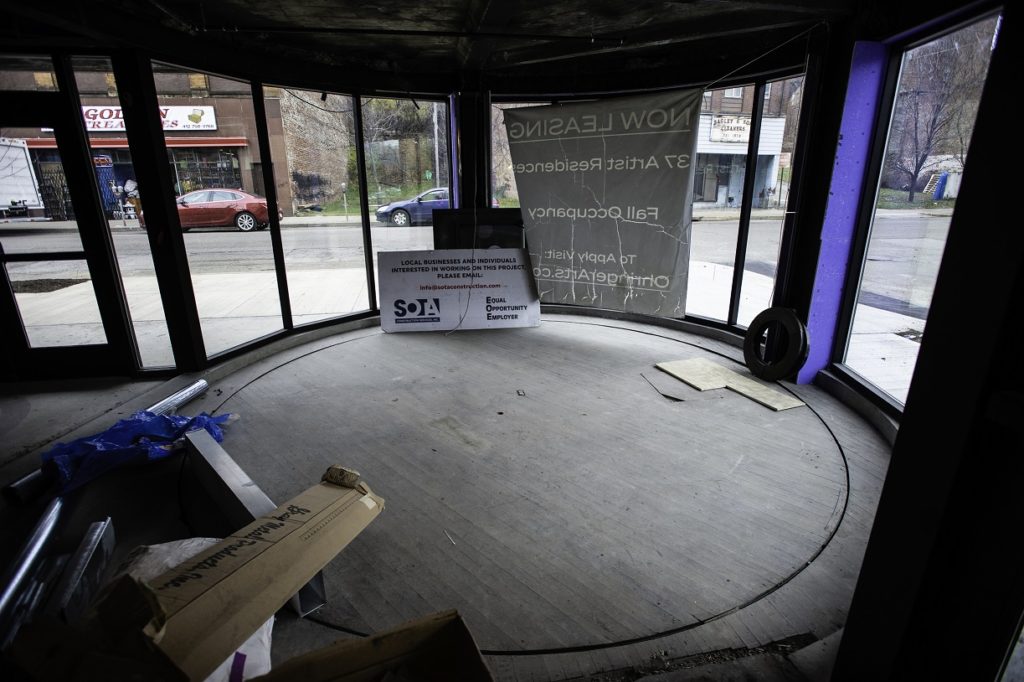
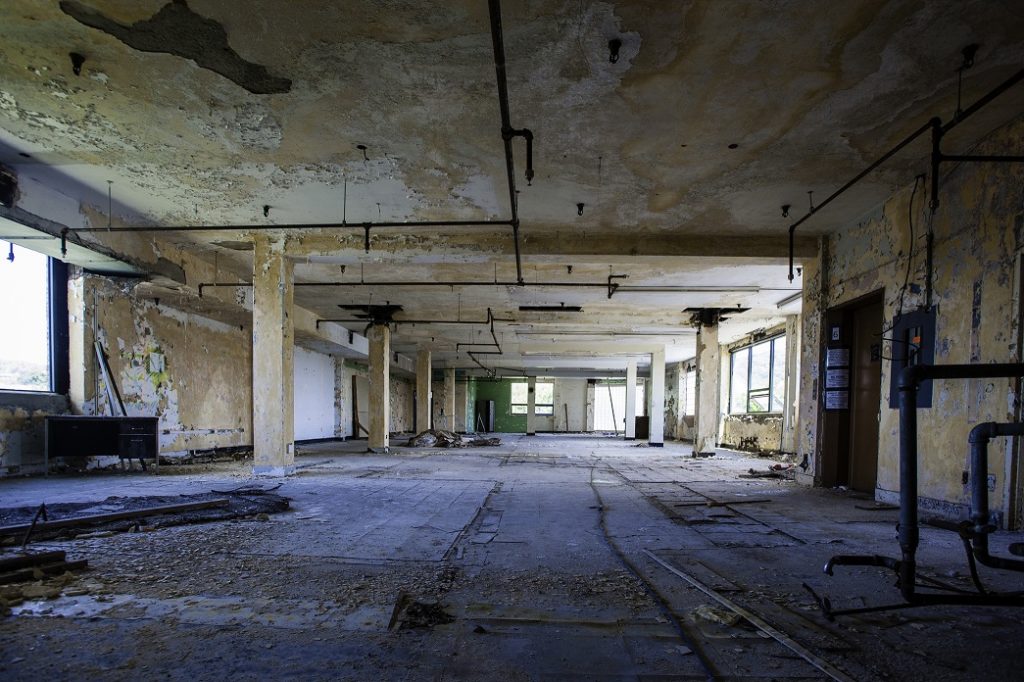
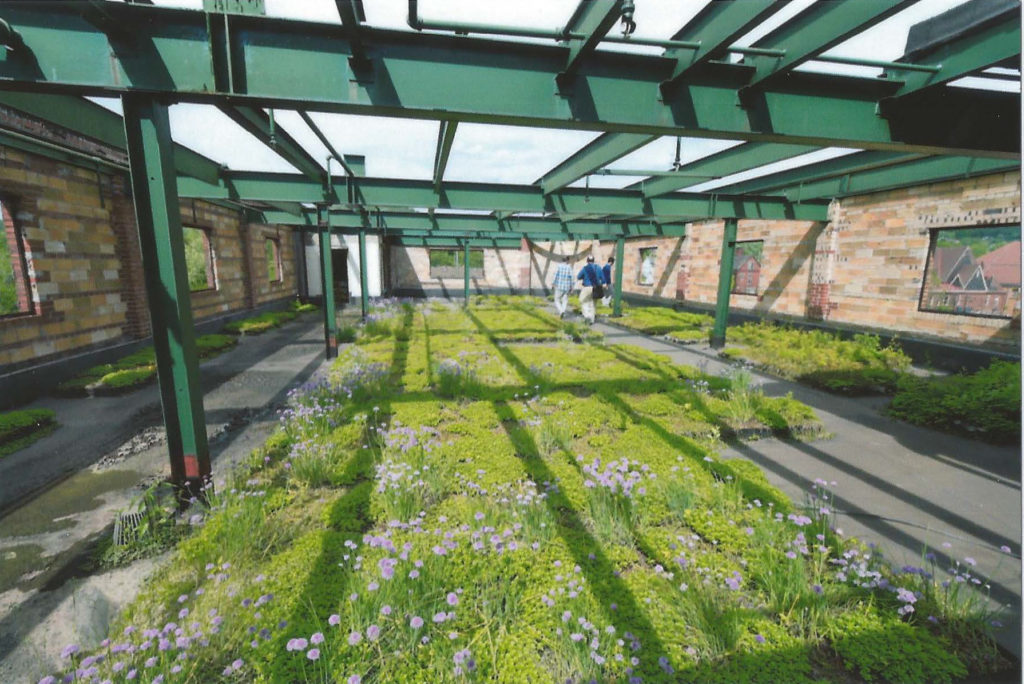
The building began its return to glory when it was individually listed in the National Register of Historic Places on August 6, 2020 (PA-SHARE Resource #2017RE01043), and with this historic status a reuse plan was developed that included the Federal and State Historic Rehabilitation Tax Credit Program as a vital component in the overall financing package.
The Rehabilitation Project
Between 2019-2020, Ohringer Arts of Braddock LP started the $13.6 million rehabilitation of the vacant Ohringer Home Furniture Store using the federal historic tax credits. Two notable achievements of this rehabilitation project is the preservatoin of the curved glass block corner windows, curved storefront, and massive illuminated blade sign. Other exterior work included:
- masonry repairs,
- insertion of new window openings and entrances on secondary elevations,
- reopening of infilled openings for installation of new historically compatible window units,
- introduction of new outdoor patio area on ground floor, and reconstruction of roof at original location and height with new penthouse and amenity area on the exterior.
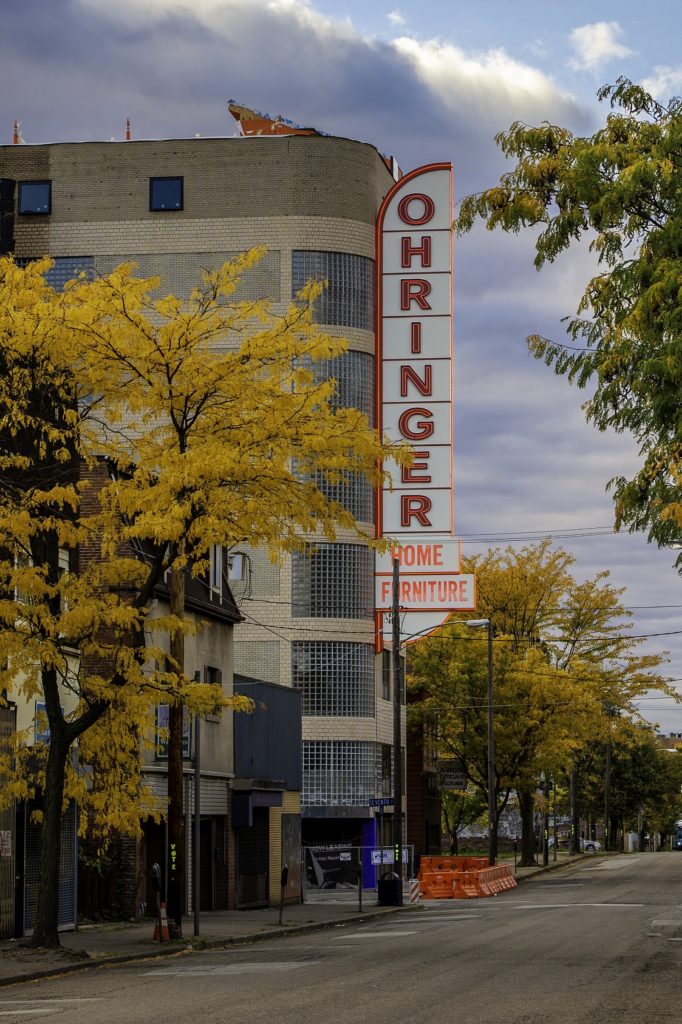
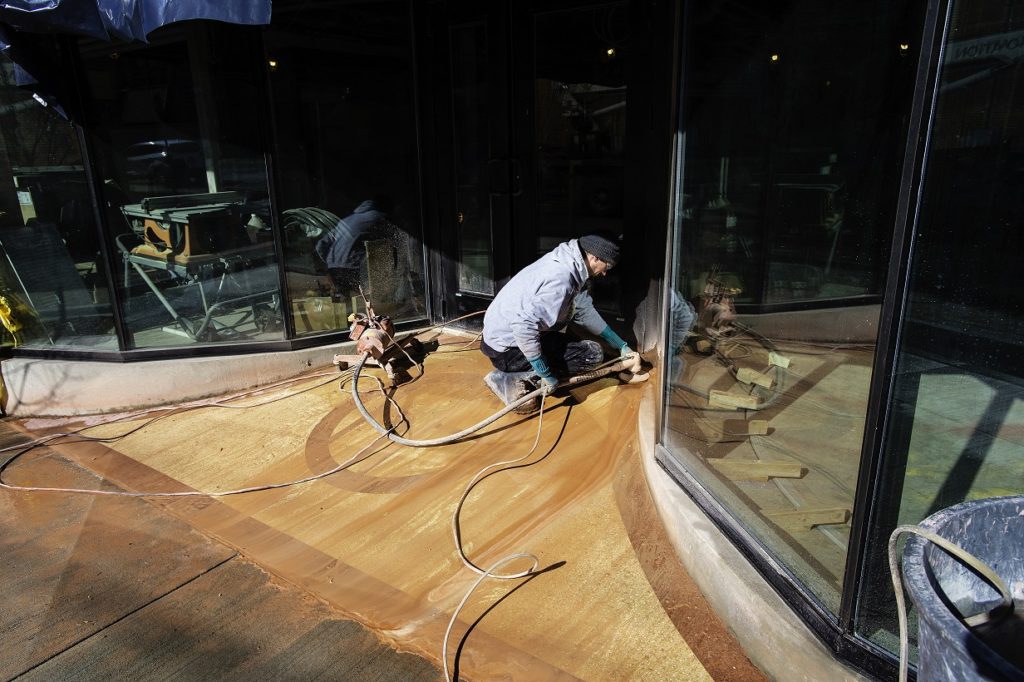
On the interior, the existing building lost most of the historic fabric except for a section of terrazzo floor with Ohringer emblem and wood circular display platform on first floor that the building owner retained. Other work on the interior included new partitions and ceilings, installation of new finishes and mechanical equipment.
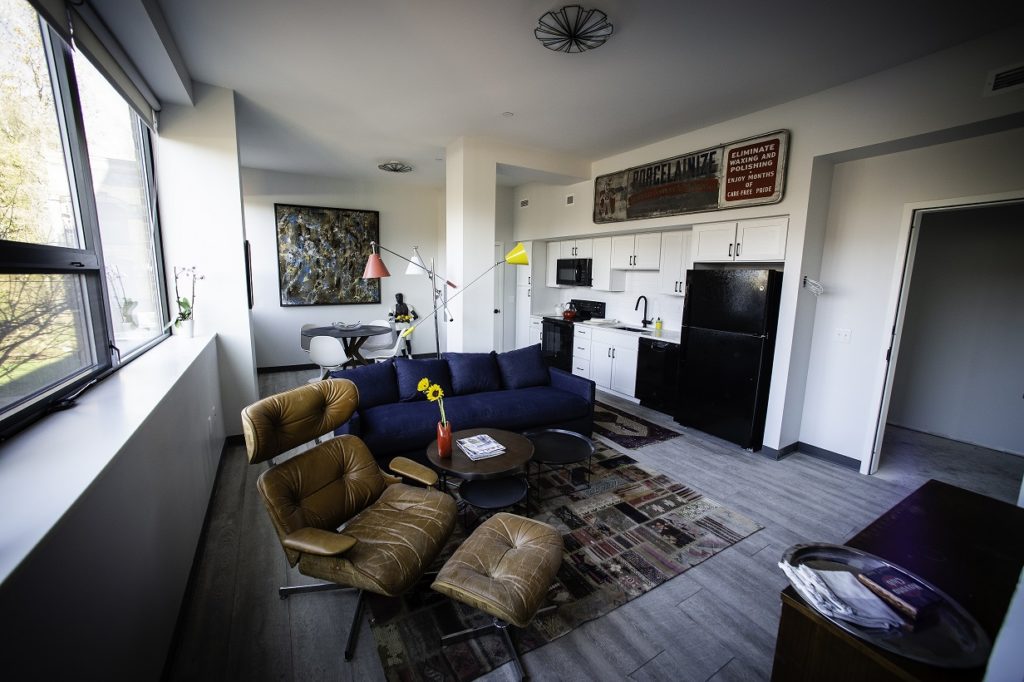
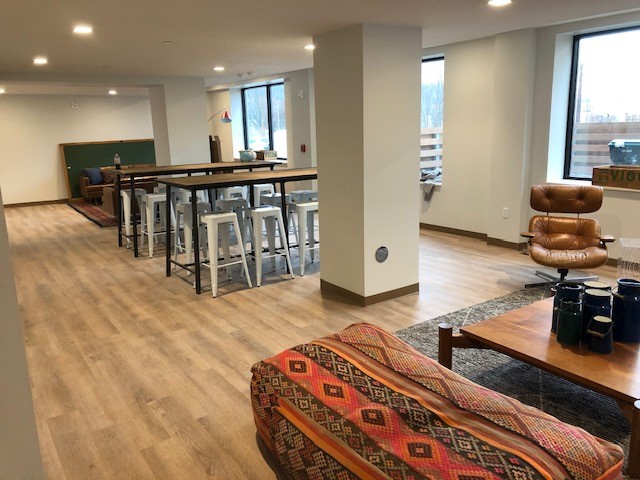
Overall, the project ran very smoothly except for some redesigning of the new features on roof top and the addition of new window openings on the secondary side elevation, which that were necessary to allow for a residential use and retain the character defining glass block windows on the primary facades.
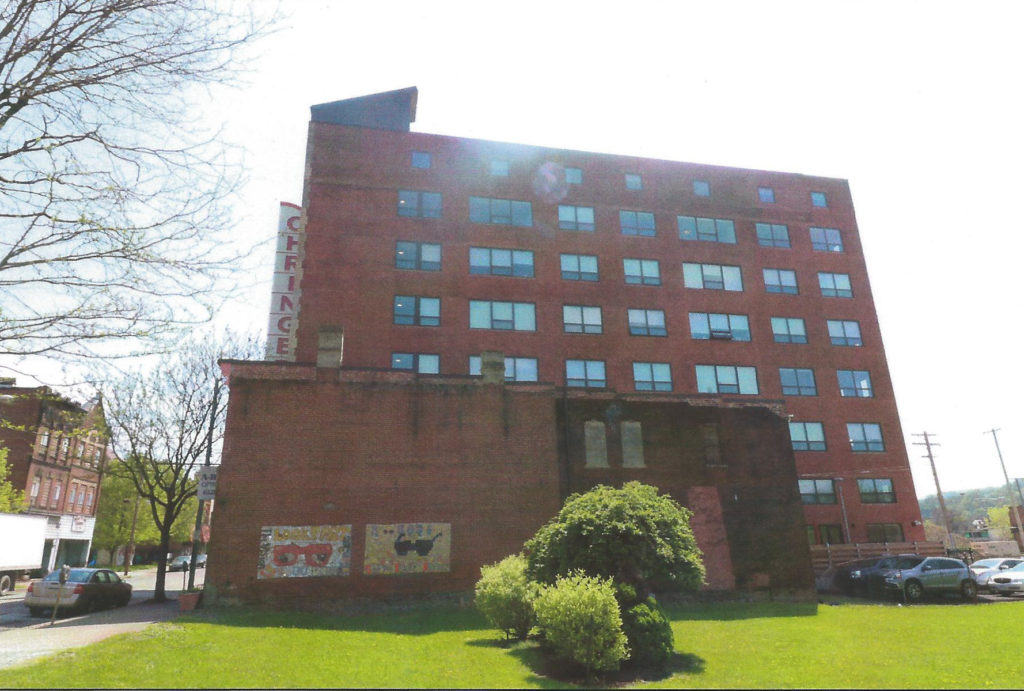
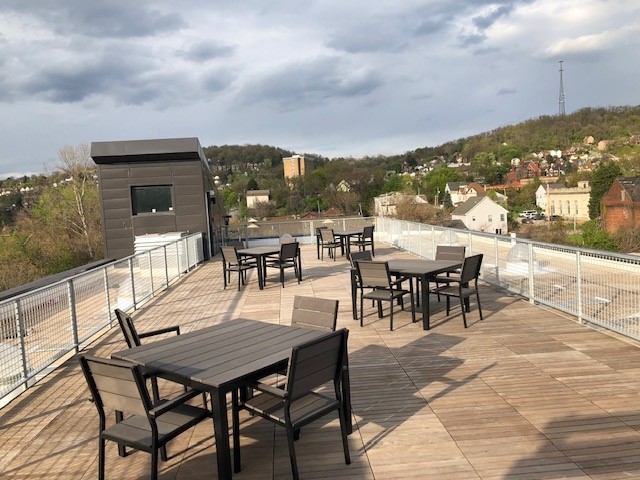
In the end PA SHPO and NPS approved the redesigned work that entailed minimizing visibility of roof top features and reconfiguring and simplifying new window size and design. The project team received their Part 3 approval certification from the National Park Service on June 29, 2021, as the completed work met the Secretary of the Interior’s Standards for Rehabilitation. In addition to using the federal historic preservation tax credits, the project was also a recipient of a $200,000 PA Historic Preservation Tax Credit.
A New Life
Now operated as artist residences, the Ohringer has been developed to assist with Braddock residents on community revival transformation.
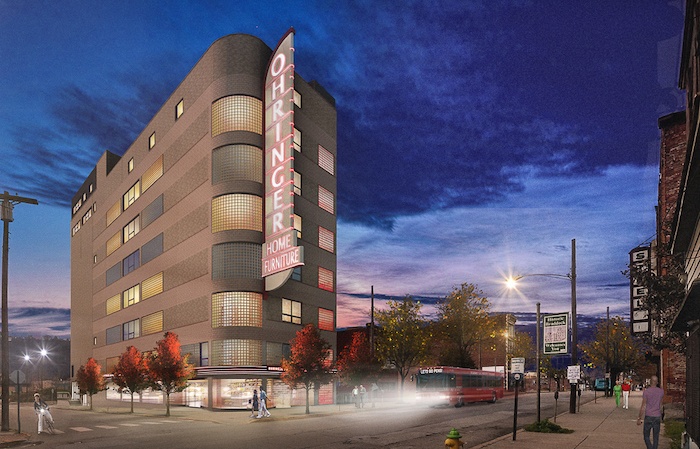
As stated on the building’s website, “It is well known that artists lead the way in economic revitalization and the transformative change in distressed communities. Artists from all disciplines help to build the foundation for economic growth and create an exciting and interesting place to live, work and play.”
This great project among others in Braddock are beginning a venture to bring back a once thriving industrial town to its new acclamation that benefits the local residents and attracts visitors from far and near. A movement that should be celebrated by the Preservation community and the Commonwealth of Pennsylvania.
Thanks for the write up and the great work to the PA HISTORIC PRESERVATION OFFICE! We appreciated collaborating with you and are thrilled with the final outcome. Most importantly, it has been great to see the strong community identity within and around the building, reflecting Braddock’s awesome resilience and its true welcoming spirit. Similar congratulations go to another great Pennsylvania agency PHFA who provided LIHTC financing!
Sincerely,
Ken Doyno, AIA
Rothschild Doyno Collaborative